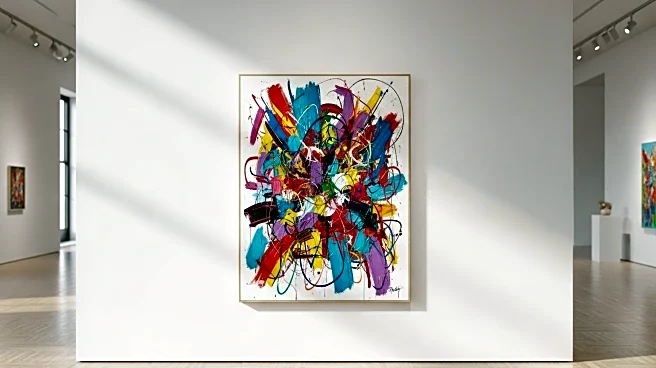What's Happening?
Claire Oliver Gallery is expanding its presence in New York's Harlem neighborhood by utilizing the upper floors of its four-story townhouse. This expansion aims to create a more intimate salon-style space for showcasing artwork, diverging from the traditional 'white box' gallery model. The gallery's owner, Claire Oliver, emphasizes the importance of fostering dialogue and community through art. The expansion comes amid a challenging period for the art market, with several galleries closing and others seeking alternative exhibition models. The gallery will inaugurate the new space with exhibitions featuring artists such as BK Adams and a group show with works by Barbara Earl Thomas, Carolyn Mazloomi, and others.
Why It's Important?
The expansion of Claire Oliver Gallery represents a significant shift in the art exhibition landscape, offering a more personalized and engaging experience for visitors. This move could influence other galleries to reconsider their exhibition strategies, especially in a contracting art market. By focusing on diverse media and intimate settings, the gallery aims to attract a wide range of art enthusiasts, from seasoned collectors to first-time visitors. This approach may help sustain interest and investment in the arts, fostering a vibrant community in Harlem and potentially inspiring similar initiatives in other cities.
What's Next?
The gallery plans to open its expanded space with exhibitions starting September 5, featuring a mix of solo and group shows. This initiative may prompt other galleries to explore similar expansions or alternative exhibition models to adapt to the evolving art market. The success of this expansion could lead to increased collaboration among artists and galleries, further enriching the cultural landscape in Harlem and beyond.
Beyond the Headlines
The expansion of Claire Oliver Gallery highlights the potential for art spaces to serve as community hubs, encouraging deeper engagement with art and fostering meaningful conversations. This approach challenges the conventional gallery model and may lead to long-term shifts in how art is presented and experienced, emphasizing inclusivity and accessibility.











